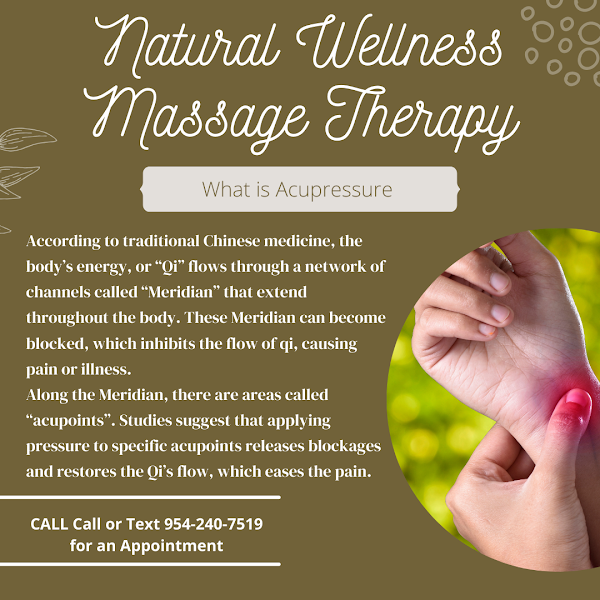What is Acupressure
Introduction
In the quest for holistic well-being, people have explored various alternative therapies, and one such practice gaining traction is acupressure. This ancient healing art, rooted in traditional Chinese medicine, involves applying pressure to specific points on the body, known as acupoints, to stimulate energy flow and promote healing.
Principles of Acupressure
At the core of acupressure are the principles of meridians and energy flow. According to traditional Chinese medicine, energy, or qi, flows through the body along specific pathways called meridians. By applying pressure to certain points along these meridians, practitioners aim to correct imbalances and enhance the body’s natural healing abilities.
Benefits of Acupressure
The benefits of acupressure are vast, ranging from pain relief to stress reduction. Many individuals turn to acupressure as a complementary therapy for various conditions, thanks to its non-invasive nature and potential to promote overall well-being.
Common Acupressure Points
Acupressure targets specific points on the body, and understanding these points is crucial for effective practice. Head and neck points, hand and wrist points, and lower body points are among the commonly addressed areas.
Acupressure Tools and Techniques
While acupressure often relies on the skilled use of fingers and hands, various tools and techniques have emerged to make the practice more accessible. From acupressure mats to specially designed balls, these aids cater to diverse preferences.
Conditions Treatable with Acupressure
Research suggests that acupressure may be beneficial for managing conditions such as headaches, insomnia, and mental health issues. Understanding how acupressure can complement conventional treatments is essential for those exploring alternative therapies.
Acupressure for Self-Care
Incorporating acupressure into a daily wellness routine doesn’t have to be complex. Simple techniques that individuals can perform on themselves contribute to the overall effectiveness of this ancient practice.
Scientific Support for Acupressure
As interest in alternative therapies grows, so does the scientific scrutiny of practices like acupressure. Research findings support the efficacy of acupressure in certain contexts, prompting some in the medical community to view it as a valuable complementary approach.
Precautions and Contradictions
While generally safe, acupressure is not suitable for everyone and should be approached with caution. Knowing when not to use acupressure and consulting with a healthcare professional is vital for ensuring a safe experience.
Acupressure vs. Acupuncture
Often confused, acupressure and acupuncture differ in their approaches. Understanding the distinctions between these two therapies helps individuals make informed decisions about which may be more suitable for their needs.
Personal Experiences with Acupressure
Real-life testimonials and anecdotes shed light on the diverse experiences people have had with acupressure. From pain relief to improved sleep, individual accounts offer a personal perspective on the effectiveness of this ancient healing art.
Acupressure and Traditional Medicine
Beyond its individual benefits, acupressure holds cultural significance in traditional medicine. Exploring how acupressure integrates into holistic healthcare systems adds depth to its understanding and application.
Acupressure in the Modern World
As interest in holistic wellness grows, acupressure is finding a place in the modern world. Popularization through social media, online resources, and dedicated communities contributes to its accessibility and widespread adoption.
DIY Acupressure for Common Ailments
For those curious about trying acupressure at home, simple techniques for common ailments offer quick fixes. However, understanding safety precautions and when to seek professional advice is crucial for a positive experience.
Conclusion
In the tapestry of alternative therapies, acupressure stands out as a time-tested method with potential benefits for a wide range of individuals. Whether seeking relief from specific conditions or simply exploring avenues for holistic well-being, acupressure offers a unique approach worth considering.
Frequently Asked Questions (FAQs)
- Is acupressure safe for everyone?
- Acupressure is generally safe, but certain conditions may require caution. Consult with a healthcare professional before starting.
- Can I practice acupressure on my own?
- Yes, many acupressure techniques are suitable for self-practice. However, proper guidance and understanding of pressure points are essential.
- How long does it take to experience the benefits of acupressure?
- The timeline varies, but some individuals report immediate relief, while others may require consistent practice over time.
- Are there any side effects of acupressure?
- Side effects are rare but may include temporary soreness or bruising at pressure points. If in doubt, consult with a healthcare professional.
- Can acupressure replace conventional medical treatments?
- Acupressure is often used as a complementary therapy. It can enhance conventional treatments but should not replace professional medical advice.




